Downloading Data from the Worldbank [Oct. 15, 2012, 1:03 p.m.]
We started out with the question how healtcare spending affects life expectancy around the world. This is one of the answers we can find looking at data from the worldbank.
Walkthrough: Downloading Data from the Worldbank
- Open the worldbank data portal: it lives in http://data.worldbank.org
-
Select “Data Catalog” from the menu on the top.
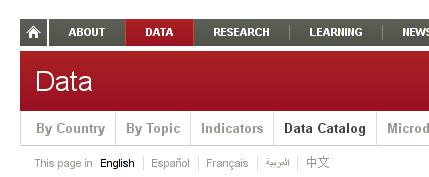
- In the long list on the bottom find “World Development Indicators”
-
Click on the blue “databank” button next to it.

- You’ll find a very different site: The Databank - The databank is an interface to the worldbank database. You can select what data you want to see from which countries for what period of time.
-
First select the countries. We’re interested in all the countries click on “select all” in the country view and then on “next”
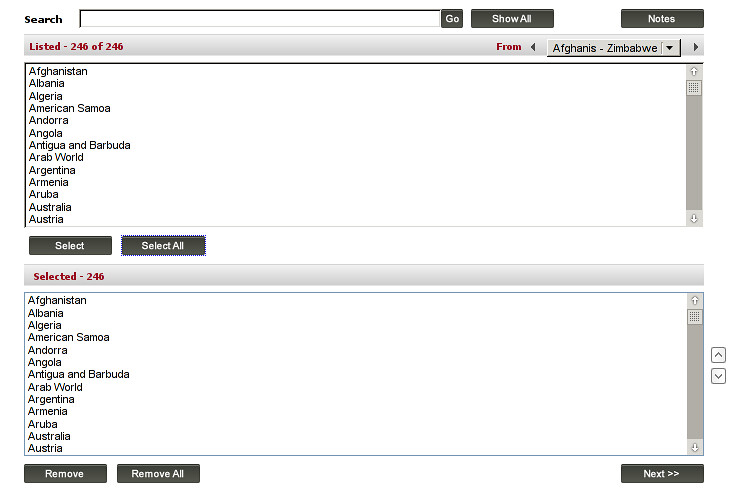
- Now you’ll see a long list of data series you can export. We’ll need a few of them.
- First we are interested in healthcare expenditure so type “Health” in the little search box on the top of the list and click “Go”
-
Select “Health expenditure, private (% GDP)”, “Health expenditure, public (% GDP)” and “Health expenditure, total (% GDP)”. And click on “Select”
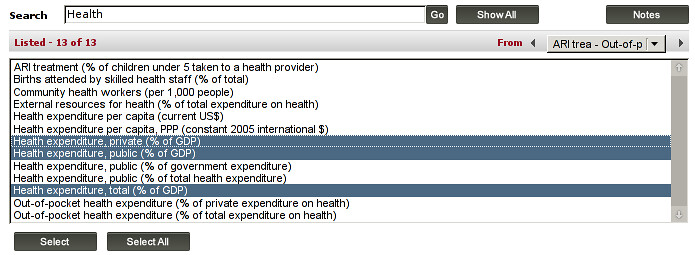
- Since the expenditure is in % of GDP we’ll need to get the GDP as well. Since we want to compare countries directly we’ll need GDP in US$. To do this type GDP into the search box and find the entry “GDP (current US$)”
- If we want to see how healthcare expenditure affects the life expectancy we need to add life expectancy to the data.
- Now let’s add one more thing: Population - like this we can calculate how much is spent by and on an average person. Search for “Population” and select “Population, total”.
-
Bring GDP and Population to the top with the arrows on the side of the list, your selection should now look like this:

- Click on “Next” to select the years we are interested in.
- To keep things easy, select the years 2000-2011 (you can do multiple selections by either pressing “ctrl” or “shift”). And click next
-
You’ll see an overview screen now on the top left there is a rough layout of how your downloaded file will look like. You’ll see “time” in the columns bit and “series” in the rows bit - this influences how the spreadsheet will look like.
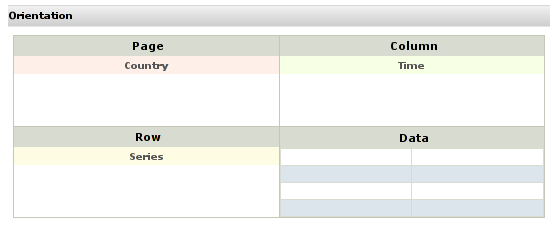
- While this might be great for some people: The data is a lot easier to handle if all of our “series” are in columns and the years are different rows. So let’s change this.
- Simply drag the “time” from columns to “rows” and the “series” from rows to columns
-
Your arranged organization diagram should look like this:
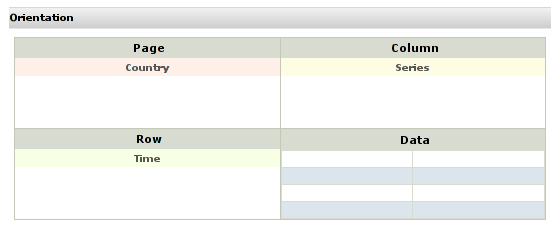
- Now let’s go and “Export”
- If you click on the “Export” button a pop up will appear asking you for the format. Select “CSV”.
- You will then be able to download a file - store and name it in a folder so you remember where it comes from and what it is for.
Task: If you found your own alternative data to answer this question, congratulations! Take a moment to upload it to the datahub - and have a browse to see what other School of Data learners have found.


